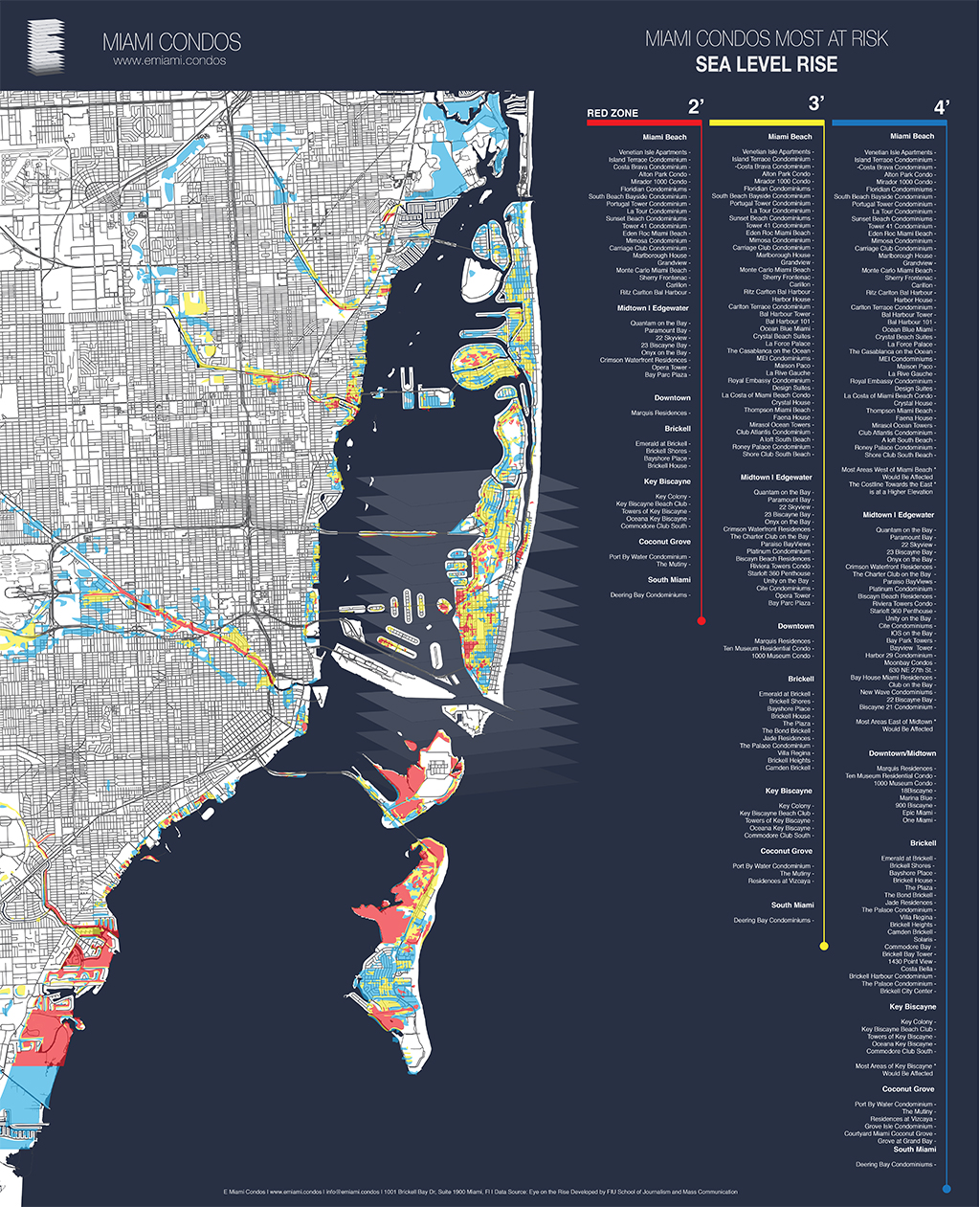Miami stands to lose up to $3.5 trillion in assets by 2070 due to sea level rise, according to a new National Wildlife Federation report.
Miami has the largest amount of exposed assets, beaches included, of any coastal city, the report shows.
Guangzhou, China ranked second; and New York ranked third, according to the “Changing Tides: How Sea-Level Rise Harms Wildlife and Recreation Economies Along the U.S. Eastern Seaboard” report.
In Florida, $69 billion worth of property is at risk of flooding in less than 15 years, and beachfront property in Miami-Dade alone is valued at more than $14.7 billion.
Coastal flooding and beach erosion are among the biggest offenders for Florida, according to the report: Since the early ’90s, the state has spent $393 million on replacing sand. To maintain those beaches over the next 50 years, Miami-Dade County will need roughly 20 million cubic yards of sand, according to the Army Corps of Engineers.
Property values in South Florida are expected to fall as the tides rise, experts have said. And beachfront property has always been more valuable to developers and real estate buyers in the region.
The NWF issued the report to illustrate how sea-level rise harms wildlife and recreation economies along the U.S. Eastern Seaboard. While cities like Miami and New York are at the top of the list, the report states that poorer areas along the coast could be more vulnerable because they don’t have the resources to deal with the effects of climate change.
The city of Miami Beach, for example, is investing at least $400 million in raising street heights and installing water pumps throughout the barrier island’s most flood-prone areas. In addition, all new construction greater than 7,000 square feet must be Gold Leed Certified.
The National Wildlife Federation said some ways to mitigate the effects of climate change are to “curb development that degrades coastal ecosystems” and reform the National Flood Insurance Program to discourage redevelopment in “risky areas.”
Tourist attractions, including the Florida Everglades and the Florida Keys, are also at risk.
Check out a February map of the most at-risk areas of flooding in Miami, including Key Biscayne, Virginia Key and parts of Miami Beach:
